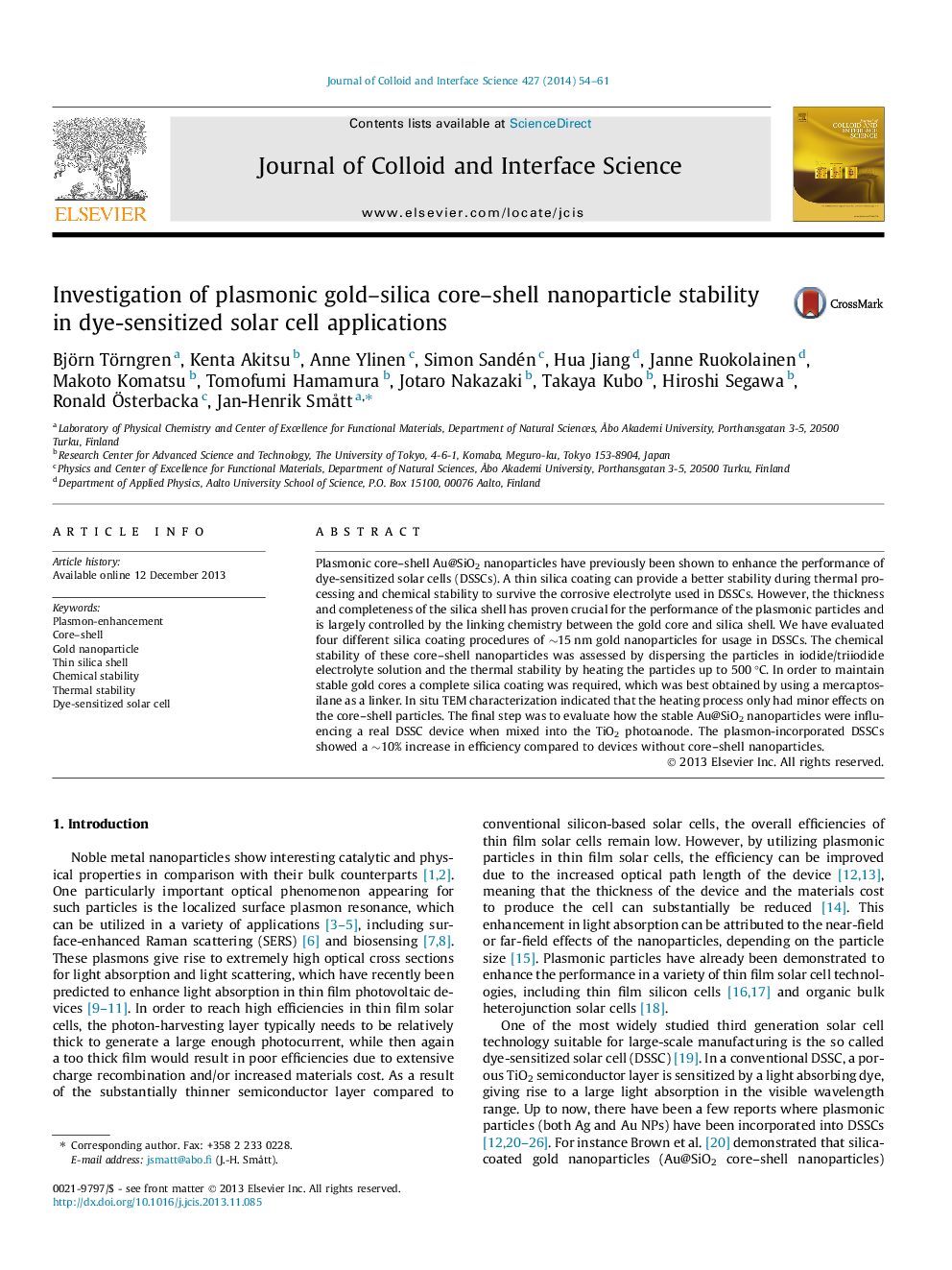| کد مقاله | کد نشریه | سال انتشار | مقاله انگلیسی | نسخه تمام متن |
|---|---|---|---|---|
| 607118 | 1454568 | 2014 | 8 صفحه PDF | دانلود رایگان |
• Gold nanoparticles were coated with thin SiO2 shells by various synthesis methods.
• The coating coverage and thickness is greatly affected by the synthesis conditions.
• Using these plasmonic core–shell particles in DSSCs gave a ∼10% higher efficiency.
• Complete SiO2 coverage is needed to protect the gold from the corrosive electrolyte.
Plasmonic core–shell Au@SiO2 nanoparticles have previously been shown to enhance the performance of dye-sensitized solar cells (DSSCs). A thin silica coating can provide a better stability during thermal processing and chemical stability to survive the corrosive electrolyte used in DSSCs. However, the thickness and completeness of the silica shell has proven crucial for the performance of the plasmonic particles and is largely controlled by the linking chemistry between the gold core and silica shell. We have evaluated four different silica coating procedures of ∼15 nm gold nanoparticles for usage in DSSCs. The chemical stability of these core–shell nanoparticles was assessed by dispersing the particles in iodide/triiodide electrolyte solution and the thermal stability by heating the particles up to 500 °C. In order to maintain stable gold cores a complete silica coating was required, which was best obtained by using a mercaptosilane as a linker. In situ TEM characterization indicated that the heating process only had minor effects on the core–shell particles. The final step was to evaluate how the stable Au@SiO2 nanoparticles were influencing a real DSSC device when mixed into the TiO2 photoanode. The plasmon-incorporated DSSCs showed a ∼10% increase in efficiency compared to devices without core–shell nanoparticles.
Figure optionsDownload high-quality image (118 K)Download as PowerPoint slide
Journal: Journal of Colloid and Interface Science - Volume 427, 1 August 2014, Pages 54–61
